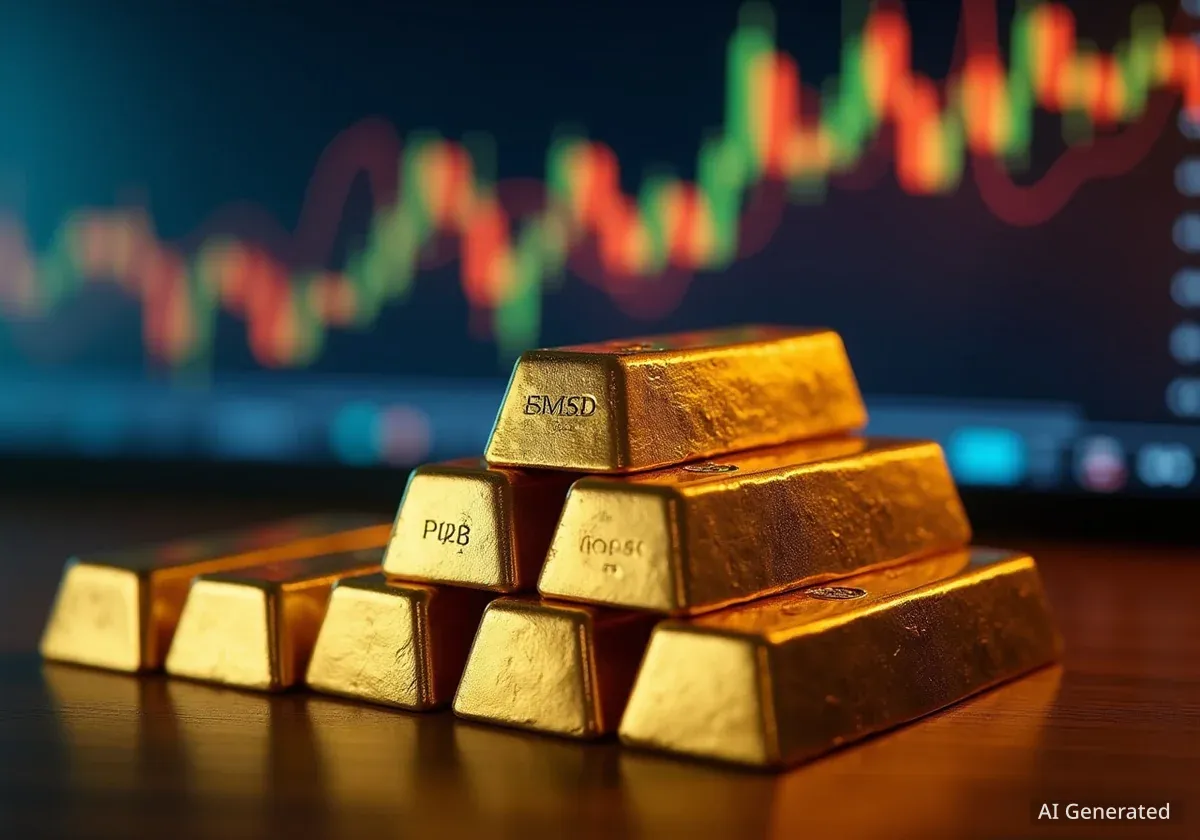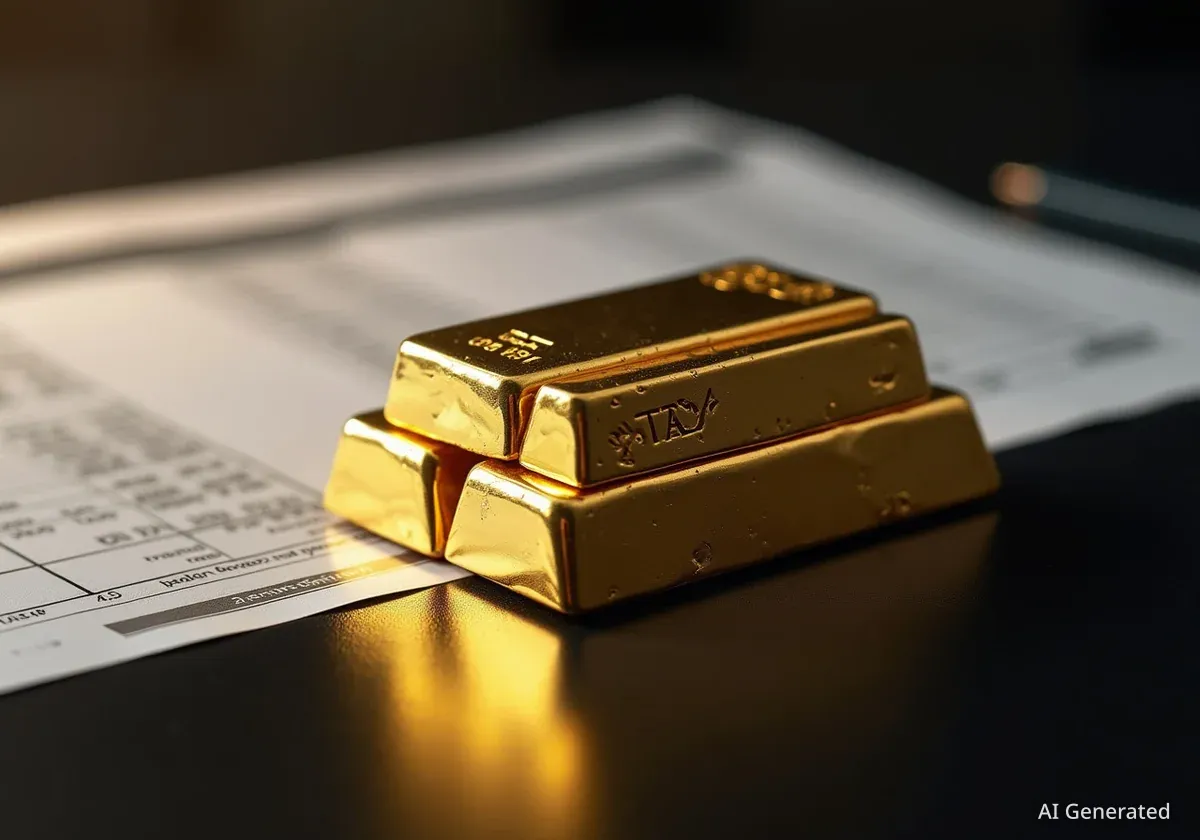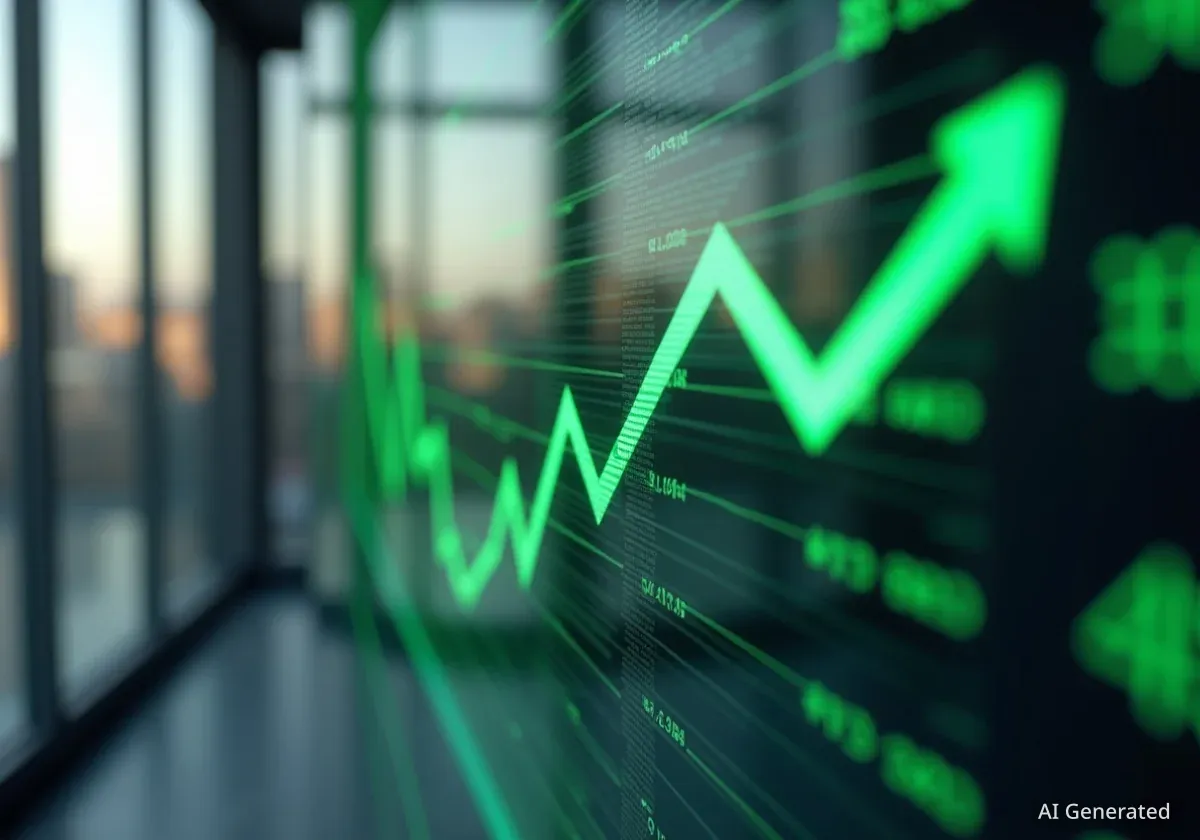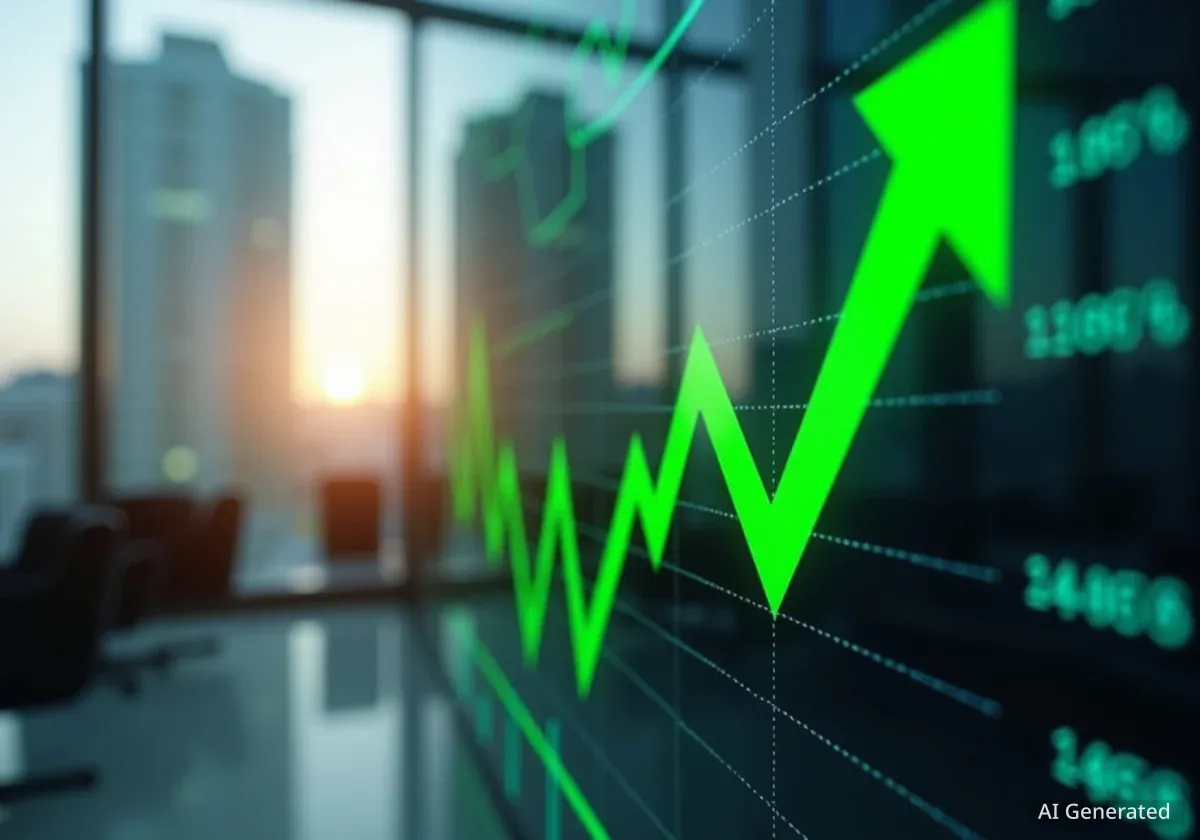Gold prices have consistently reached new record highs, prompting a debate among market analysts about whether the precious metal is in a financial bubble. While the rapid price increase has raised concerns, several key indicators, particularly from the options market, suggest it may be an aggressive bull market rather than an unsustainable bubble.
Key Takeaways
- Gold prices settled at a record $3,775.10 per ounce, marking the 36th record high of the current year.
- The metal's value has increased by approximately 43% this year, surpassing its inflation-adjusted peak from 1980.
- Analysts are divided, with some pointing to a strong bull market driven by fundamental factors, while others see potential signs of a bubble.
- Data from the options market, such as implied volatility and skew, does not currently show the frantic behavior typically associated with financial bubbles.
- Geopolitical uncertainty, inflation fears, and a decline in global trust are cited as primary drivers for gold's safe-haven appeal.
Gold's Remarkable Price Surge
The price of gold has been on a significant upward trend since the middle of last year, consistently setting new benchmarks. Recently, gold for December delivery saw a substantial single-day increase, climbing $69.30, or 1.9%, to close at $3,775.10 an ounce on the Comex exchange. This marked its highest-ever finish for a most-active contract.
According to Dow Jones Market Data, this was the 36th time this year that gold has closed at a record high. The performance has been notable, with the metal's price rising around 43% year-to-date. This surge has pushed its value beyond the inflation-adjusted high it reached in 1980, leading some to question the rally's sustainability.
What Defines a Financial Bubble?
A financial bubble occurs when the price of an asset, such as a stock or commodity, rises to a level far above its fundamental value. These periods are often characterized by intense investor enthusiasm and speculation. Identifying a bubble in real-time is notoriously difficult, as they are often only confirmed in hindsight after a rapid price collapse, or "crash."
The Bubble Debate: Arguments and Analysis
The conversation around a potential gold bubble is intensifying. Brett Friedman, a contributor at Winhall Risk Analytics and OptionMetrics, notes that gold is currently seen by many as a perfect investment for uncertain times. It serves as a form of "catastrophe insurance" against a range of fears including inflation, currency debasement, debt, and geopolitical conflict.
Friedman acknowledges that while interest in gold is high, this alone does not confirm a bubble. He points out that financial bubbles are rare, and claims about their existence should be viewed with skepticism. He argues that the current situation appears more like an "aggressive and consistent bull market" rather than a speculative frenzy.
Some indicators often associated with bubble formation are present, such as gold's growing presence on social media and in mainstream news, along with a significant increase in gold-backed ETF activity. However, deeper market data tells a different story.
Insights from the Options Market
To support his analysis, Friedman turns to the gold options market, which he says is not displaying the typical signs of bubble-related panic. If a bubble were forming, certain behaviors would be expected:
- Increased Implied Volatility: This metric reflects market uncertainty. In a bubble, implied volatility would typically rise as price movements become more erratic. Currently, gold's implied volatility remains at relatively normal levels.
- Changes in Option Skew: In a speculative bubble, there is often a rush to buy out-of-the-money options, which are cheaper and offer the potential for large returns if the price surge continues. This would cause the "skew," or the price difference between out-of-the-money and at-the-money options, to expand.
According to OptionMetrics data, the skew for gold options has not expanded to unusual levels. This suggests that investors are not frantically buying low-premium options, a behavior that would signal a bubble mentality.
Fact: The SPDR Gold Shares ETF (GLD), one of the largest gold-backed ETFs, has recorded gains in each of the last five weeks, indicating sustained investor interest.
Fundamental Factors Driving Demand
Other experts agree that strong fundamental reasons underpin gold's rally, suggesting it has further room to grow. Adrian Ash, director of research at BullionVault, describes a "perfect storm" of factors boosting the appeal of both gold and silver.
"With America’s internal divisions and political violence both worsening, falling [Federal Reserve interest] rates are now combining with the NATO-Russia escalation to boost gold and silver’s safe-haven appeal," Ash stated.
He adds that a breakdown in Western unity on major global issues, from the conflict in Gaza to relations with China, is contributing to a "collapse in global trust and cooperation." Ash believes this environment will continue to drive investors toward precious metals, noting that recent inflows into gold ETFs are just the beginning.
Technical Indicators Signal Continued Strength
From a technical analysis perspective, gold's price action also appears robust. Jake Hanley, managing director at Teucrium, observes that the recent price movement is not based on any specific news event but rather on strong market dynamics since early September.
He points to a "healthy bull run" supported by increasing caution around inflation and ongoing geopolitical tensions. Hanley highlights that gold's price chart is showing classic signs of a breakout pattern.
"This suggests a high-conviction breakout with momentum on the side of the bulls," Hanley explained. The pattern includes a long period of consolidation, a clear break above a resistance level, and strong price continuation, all of which are considered bullish signals by technical analysts.
While the debate over a potential bubble will likely continue as long as prices rise, current market data and fundamental drivers suggest that gold's rally is supported by more than just speculation. Investors are increasingly turning to the metal as a hedge against a complex and uncertain global economic and political landscape.





